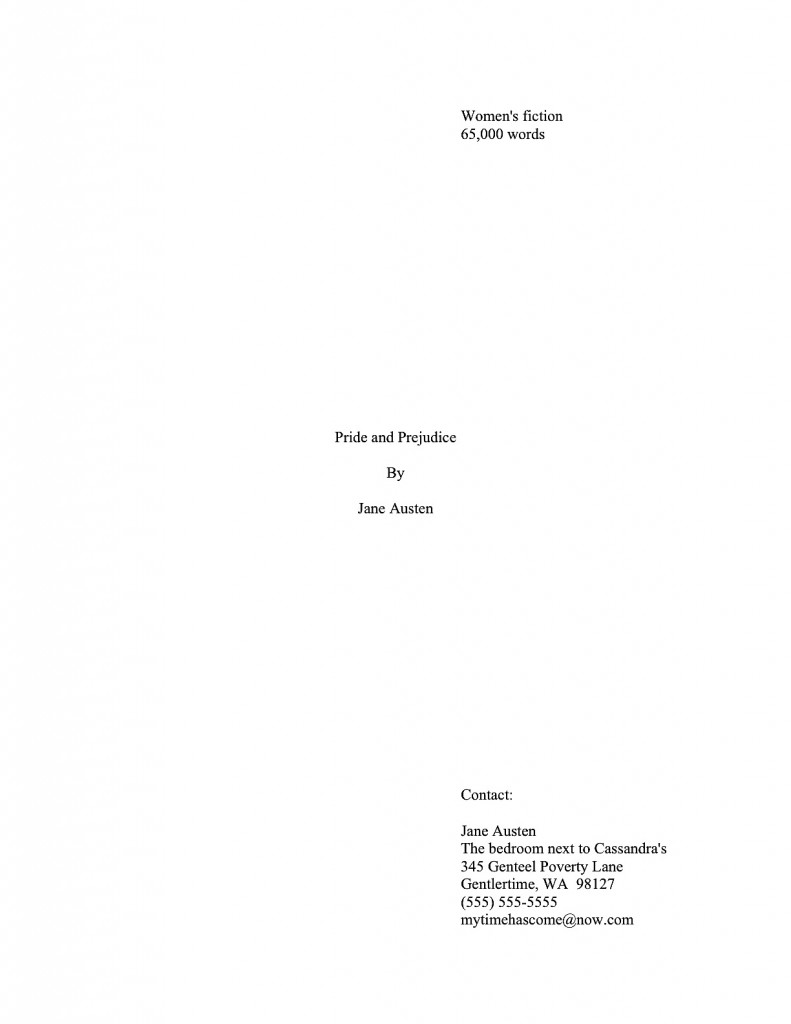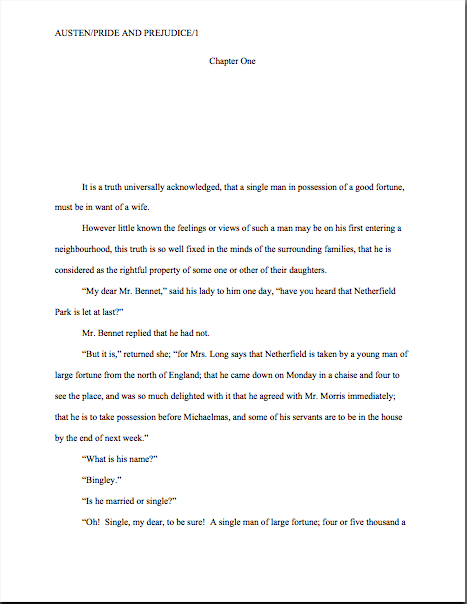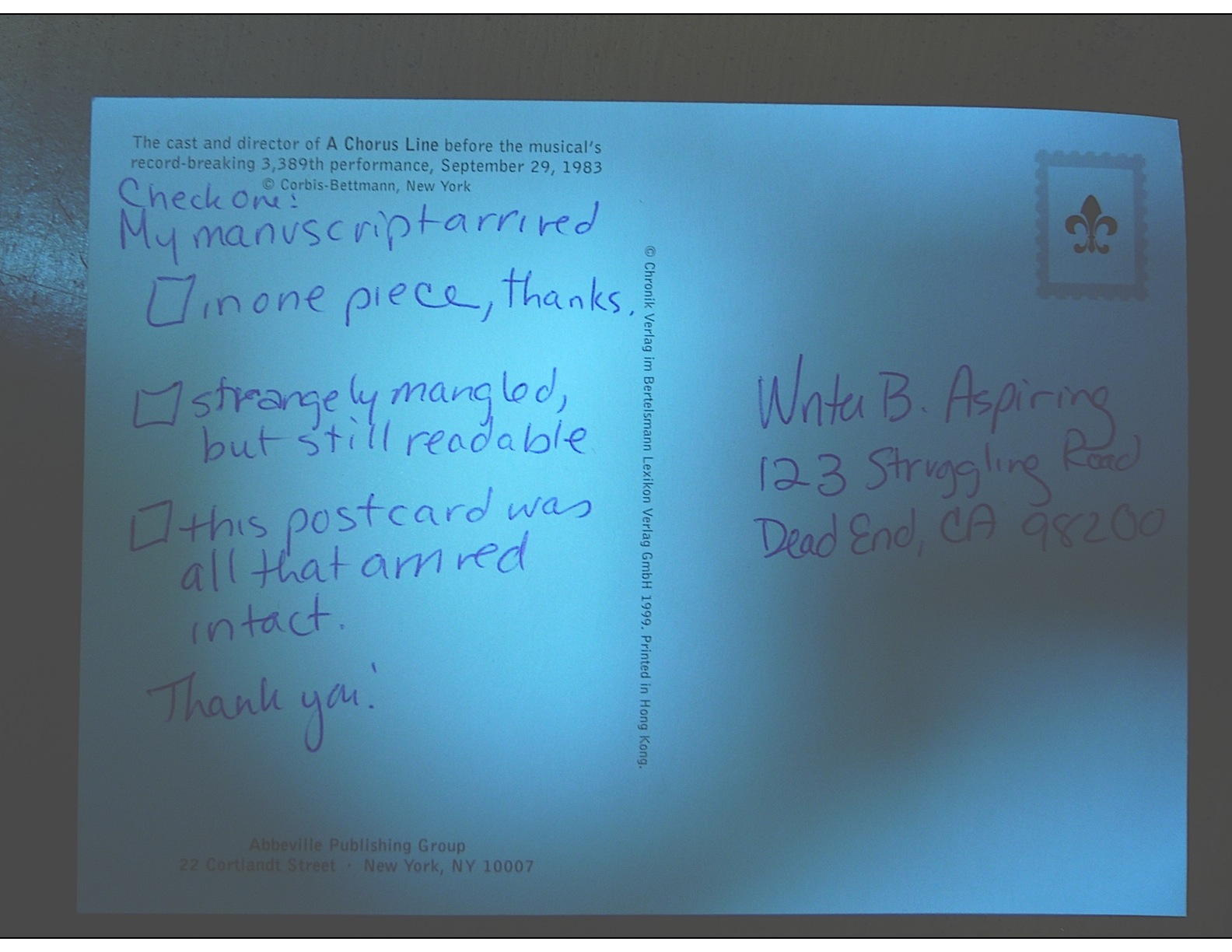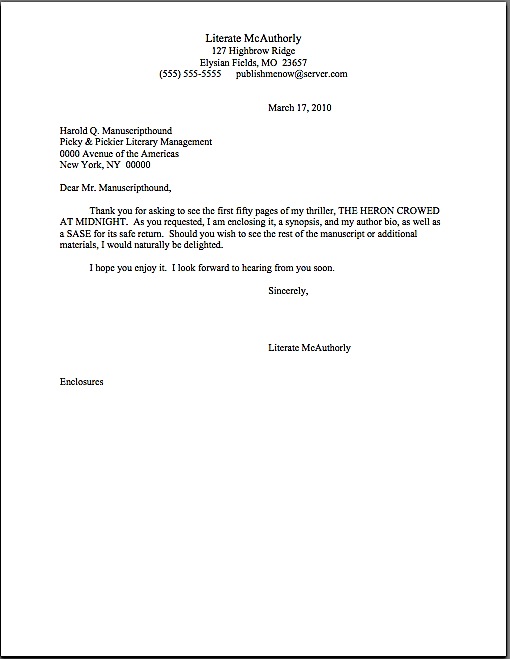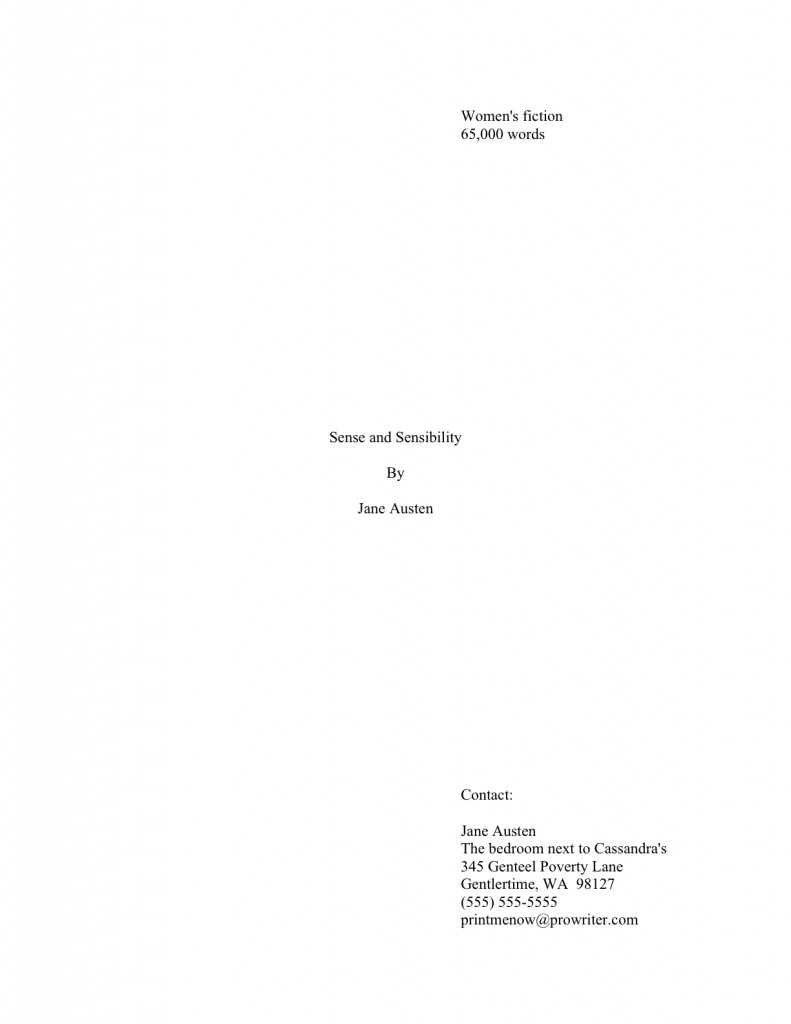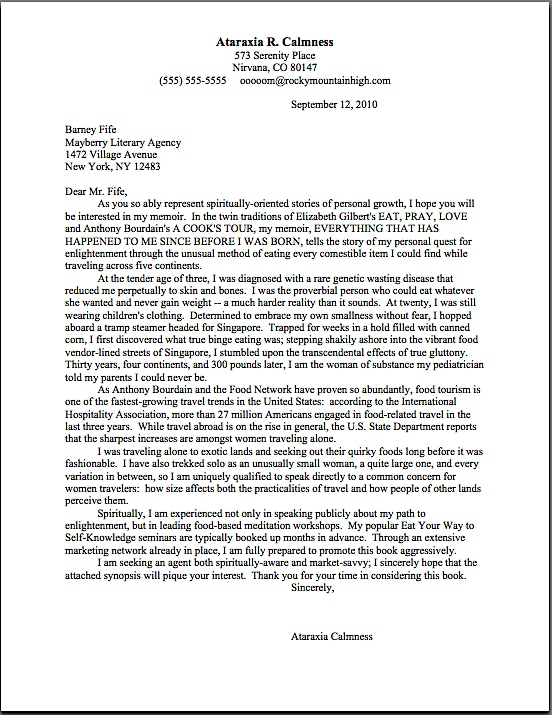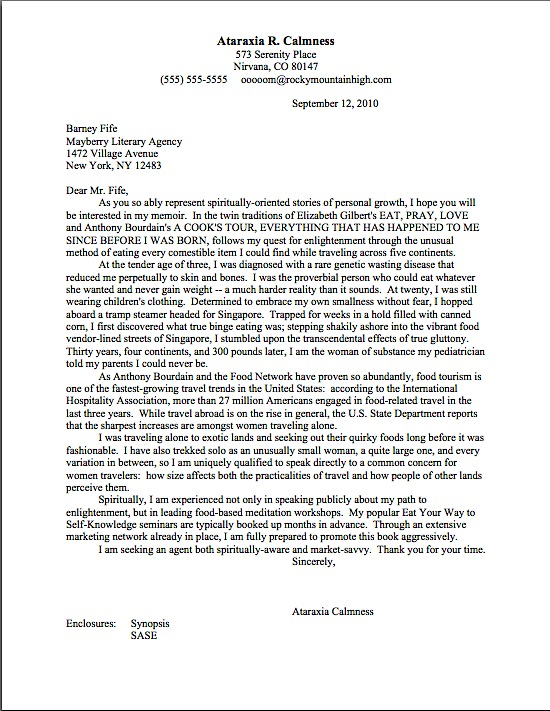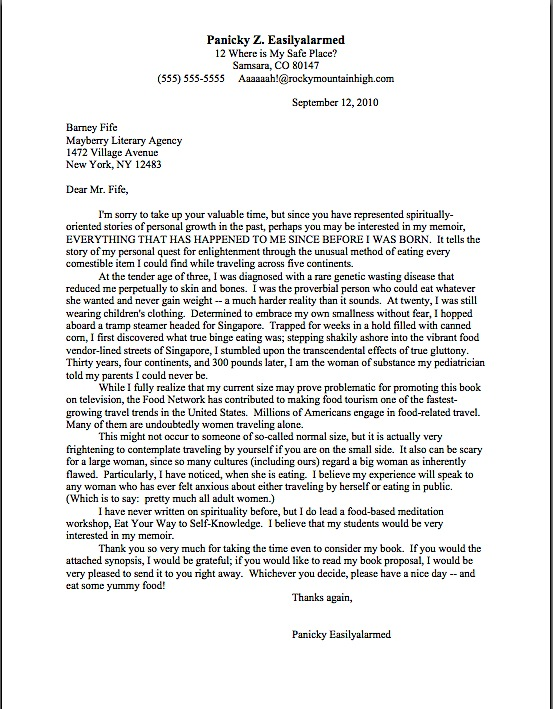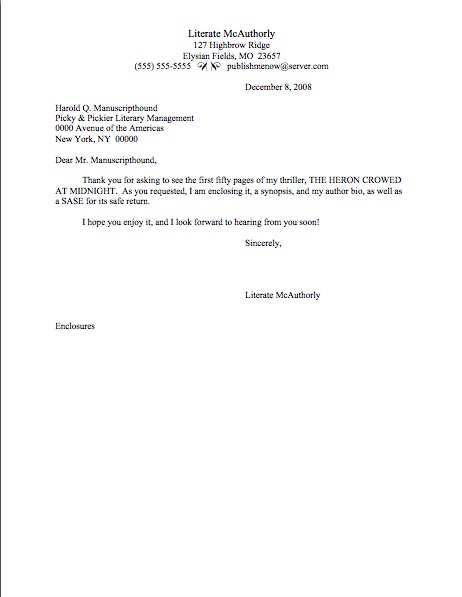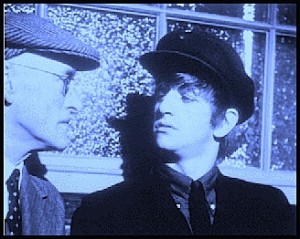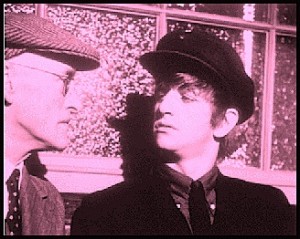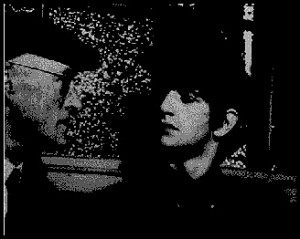
Okay, okay, so that’s not a particularly snappy title, but since we are nearing the end of this ‘Palooza on how to find agents to query (nope, already used that one), we should probably be expecting my title inventiveness to be wilting a trifle. Frankly, I’m eager to get back to some issues of craft…although, of course, given my very practical focus, I shall probably discuss them within the context of common manuscript failings that make agency screeners’ hair stand on end.
Which wouldn’t have been a bad image to use on Halloween, come to think of it: our old pal Millicent in a fright wig, permanently scarred by the haunting memory of submissions past. Have sympathy for her, campers; yes, she’s responsible for a heck of a lot of rejections, but hers is a very difficult job.
Unless, of course, aspiring writers are kind enough to make her life easy by sending her queries for books in categories nobody at her agency represents — or no longer represents. Then, her job’s a piece of proverbial cake.
Not entirely coincidentally, I waxed long, if not eloquent, in my last post on the desirability of bolstering the information one might find in a standard agents’ guide, a conference blurb, or even an agency’s website with a little further research. Today, I’m going to talk about where to seek out that additional info.
Let’s assume, for the sake of argument, that a savvy querier like you has been conscientiously haunting the library for the past month, shaking the Dewey Decimal System vigorously until a dandy list of authors of books like yours dropped out of it. Because you are market-aware, you have naturally limited your search to books that have come out within the last five years; because you are hip to booth just how tight the literary market is right now and how much more difficult it can be for an agent to sell a first-time author’s work than an established one’s, you have been focusing your efforts on first and second books, on the very sensible theory that the agents who represented them might be more likely to take a chance on a fresh new voice than others. You’ve already tracked down the agents thanked in these books’ acknowledgments.
Now, savvy querier, you’re all set to track down who represented the books ungraced by acknowledgement pages. Having embarked upon that laudable endeavor, one question is ringing in your mind like the Liberty Bell: why on earth is this most basic information so difficult to come by?
I wish I could tell you that there is some esoteric reason for that, having perhaps to do with national security or fear of offending the muses by breaking a millennium-old code of silence. In principle, since all publishing deals in the U.S. are matters of public record — not the financial specifics, perhaps, but definitely the players — gathering this data should be the proverbial walk in the park.
But it undoubtedly isn’t, at least without paying for access to a publishing industry database. While there are a few websites that offer searches by author represented, they are often also for-pay sites, and if the complaints one hears ringing through the bars that are never more than 100 yards from any writers’ conference in North America are accurate, the data on them is not always up-to-date; authors switch agencies almost as often as agents do.
Is that giant collective gasp of indignation that just rocked the ether an indication that neither of those last couple of revelations was what a writer seeking an agent wants to hear?
I hate to be the one to break it to you gentle souls, but landing an agent is not like tag: a writer doesn’t necessarily get to connect with It once, then drop out of the game. There are plenty of reasons an already-agented writer might find herself treading the wearisome querying road for a second time. An author might decide to write a book outside her agent’s interests, for instance, or the agent’s may decide he no longer wants to represent the kind of book a client writes. When an agent moves from one agency to another, his clients may or may not go with him. A mammoth, literature-deploring squid might attack Manhattan, reaching through the windows of major agencies and wrapping its grasping tentacles around any unlucky soul wandering the hallways.
Okay, so that last bit was to see if you were paying attention. Squid attacks on agencies are exceedingly rare.
My point is — you hadn’t thought I’d forgotten it, had you? — just as it would be foolish for an author looking to change agencies to revert to her query list from five or six years earlier, when she had last been in the market for representation, it would be counterproductive for an aspiring writer looking for a first agent to work off information that’s, well, a trifle on the elderly side. Or to assume that what was true a year and a half ago, when he first put together his querying list, is necessarily still true now.
Conditions change, even without the intervention of super-sized marine cephalopods.
So how might one update a query list — or add to it? The web is an invaluable tool: sometimes, you can learn who represents an author quite quickly, via a simple web search. However, as I’m sure some of you know from frustrating experience, this method can be very time-consuming, and it won’t always yield the results you want.
Why? Well, a standard search under the author’s name will generally pull up every review ever published about her work. As well as every article in which she is mentioned, prompts to buy her book at Amazon and B & N — not in that order — as well as the author’s own website. (Which, before you get your hopes up, may or may not tell you who represents her. Surprisingly often, established authors’ websites don’t.) Wading through all of that information can be a long slog, and does not always lead to what you need.
That doesn’t mean, however, that none of what turns up will help you. If you are searching for the agent who represented a specific book, it is worthwhile to check out the industry reviews excerpted on the booksellers’ sites. Or just go directly to one of the standard advance review sites: Kirkus, Library Journal, and Publishers Weekly. Occasionally, the agent’s name is listed at the end of these reviews.
(Why would these reviews list such an arcane detail? Well, the industry reviews are written primarily for the benefit of retailers who are considering stocking the book, not readers who might conceivably buy it from retailers. They appear considerably before the release date; long enough, in fact, that it is not unheard-of for editors to pull a book from the print queue that has received a less-positive-than-anticipated advance reviews, so that the book may be revised prior to release. (Or, more commonly, re-re-re-revised.) Print reviews, by contrast, tend to coincide with the book’s release, and are aimed at the general reading public. Thus, they seldom contain information of interest only to people in the industry.)
Actually, Amazon, B&N, and Powell’s all routinely post industry reviews, too, and it’s always worth checking to see if Publishers Weekly did an article on the deal. If you really wanted to take a month to get a feel for who was who in your genre, you could sit down and read the last year’s worth of advance reviews. (If you do, and you write SF/fantasy, stick with Kirkus. Trust me on this one.)
But honestly, who has the time to read all of that and write?
You were thinking that already, weren’t you? I can hear chairs shifting out there; skepticism is in the air. “Anne, Anne, Anne,” I hear some of you restless-but-observant types muttering, “you’ve been telling me for over five years that agents and editors are massively busy people who may well become impatient during the course of a two-minute pitch. Do you seriously expect me to believe that if they wanted to find out who represented a particular book, they would go shuffling though 50 websites?”
Okay, you’ve got me there: they wouldn’t. They would consult one of the standard industry databases. The catch: those databases are by subscription.
Translation: it’s gonna cost you something over and above your time.
Usually, you ostensibly join a sort of club, and one of the perqs of membership is database access. Almost invariably, you buy membership in specified time increments (often a month), rather than per-use, so if you are up for gorging yourself on agent info, you could conceivably lock yourself in a room with your computer for a week or two and generate a list of a couple of hundred names, along with the specifics of who has sold what lately, then cancel your membership.
You might be a little sick to your stomach afterward, having learned so much about what is and isn’t selling at the moment, but at least you would have a very up-to-date list.
Personally, I prefer the Publishers Marketplace database; it’s not terrifically expensive, and agents often use it themselves. It has a very straightforward function called WHO REPRESENTS, very easy to use. Feed in your favorite authors’ names, and presto! you have instant access to who sold their most recent projects. This, as those of you who have been trying to ferret out such information already know, can save you literally months of research time.
You can also track individual agents, to see whom they represent and what they have sold in the last few years. If you sign up for the for-pay Publishers Lunch e-mailings (which isn’t a bad idea, as such a high percentage of US-based publishing folks read it and/or Publishers Weekly; it’s a great way to gain a basic idea of how the biz works and how swiftly publishing fads change), you will gain access to this database.
PM charges month-to-month, so if you are strapped for cash, you could easily generate a list of authors, join for a month, search to your little heart’s content, then cancel. (But you didn’t hear it from me.) Or you could corral a few of your writer friends to go in on an ongoing subscription with you, with the understanding that you’ll share the data.
Even then, you might find it a little spendy, so I hasten to add: as savvy reader Nadine pointed out, PM’s website does allow non-members to search at least part of its database; if you’re looking for who represented a book sold within the last few years, this is a good quick option. I notice, however, that such searches do not yield specific deal information — which renders it considerably more difficult to check what, for instance, an agent has sold in the last 6 months.
Personally, I kind of like being able to look up everything that’s sold in my genre within the last month, but as we all know, my tastes a trifle odd. But why might access to such a database make a difference to the usefulness of your querying list?
Several reasons, actually. First, if you want to query every agent who has sold a book like yours in the last year, obviously, a search engine that would enable you to pull up the sales in your chosen book category over that period of time would save you quite a bit of time. Second — and this one should sound a trifle familiar to those of you who have been ‘Paloozaing of late — it’s always a nice touch to be able to mention an agent’s most recent sale of a book like yours in a query letter: Congratulations on your recent sale of Author McWriterly’s GREAT AMERICAN NOVEL. As my writing is similar, I hope you will be interested in my novel… Third — and this one should ring a few bells, too — because both the market and agency personnel are changing so fast these day, information about who is selling books in your category right now, as opposed to a year or two ago, when the books hitting the shelves now were being acquired by editors, might enable you to fine-tune your querying list.
Please pick your jaws off the floor, writers brand-new to the publishing process. Especially if you are writing fiction, it’s imperative to be aware that from an agent’s perspective, what is selling in bookstores right now is not necessarily an accurate reflection of what she can sell to a publishing house right now. Since there is typically at least a year between a publisher’s acquiring a book and its release, trolling the New Releases shelf will tell you what interested editors a while ago — not today, or even yesterday.
See why a query list-generator might want to garner up-to-the-minute sales information?
Before you dismiss the idea of spending money on professional database access, do sit down and figure out how much your time is worth. Why? Well, the practically-free method of acquiring the same information that I am about to suggest is so time-consuming that shelling out for a subscription service may start to look downright reasonable.
If you do have the time to invest, there is a free way to find out who represented any book, if it was published within the United States. As I mentioned above, the sale of a book is a matter of public record, and as such, publishers must provide information about who represented the author to anyone who asks.
So how do you get ‘em to cough up the information? Pick a book, call the publisher (there is often a phone number listed on the copyright page, to facilitate further book sales; if not, try the publisher’s website), and ask to speak to the publicity department. When you reach a human being (have a magazine handy; it can take awhile), ask who the agent of record was for the book.
You may encounter a certain amount of incredulity at your old-fashioned approach, but do not let that deter you. They are obligated to give you the information, and often, they’re rather charmed to hear that someone liked one of their books so much that he was willing to go to such significant effort to find out who represented it.
See why I thought you might find it a tad on the time-consuming side? Don’t worry; I still have a few time-saving tricks up my sleeve.
I sense a bit of disgruntlement out there. “Yeah, right, Anne: people at publishing houses are going to be happy to hear from readers. Pull the other one. I’ve always heard that under no circumstances should an aspiring writer ever call a publishing house or an agency. And why would they be nice to an aspiring writer, anyway?”
Well, for starters, that advice about never calling? It’s intended to prevent this conversation, and this conversation alone: “Hello, agency/publishing house? I have a book that’s a natural for Oprah, and…hello? Hello?”
A writer familiar enough with the ropes to be querying is probably not going to make that mistake. A dedication to playing by the rules is why, I suspect, that a weary What do you mean, you’re going to treat me like a human being? cynicism tends to pop from the mouths of aspiring writers who have been querying for a good long time.
It’s completely understandable, of course. After a couple of dozen form-letter rejections — which entail, basically, being told by a faceless entity that one’s writing is not good enough, but not being told how or why — it’s very, very easy to start to believe that agencies and publishing houses are staffed by writer-hating ogres, leering loreleis who cajole writers into sending in their hopes and dreams, purely for the pleasure of smashing them into the ground.
No wonder the giant squid has it in for them, if so. But happily for writers everywhere, this just isn’t the case.
There are a few mean people, of course, as in any profession, and I suppose it’s not out of the question that some perversely masochistic hater of the written word might choose to torture herself by becoming an agency screener. For the most part, though, if you have the opportunity to talk to an agent, editor, or one of their overworked Millicents, you will discover someone who genuinely adores good writing and is sincerely eager to promote the interests of those who produce it.
Stop laughing, jaded queriers. It’s true.
Not everyone agrees on what constitutes good writing, of course — one doesn’t have to hang around the industry very long to realize that plenty of pros apparently don’t make too strong a distinction between what is marketable and what is well-written — but contrary to the gloomy rumors perennially circulating on the writers’ conference circuit, it’s rare to find an agent or editor who genuinely regards writers as merely the necessary evil behind a successful book.
So why do so many of their form-letter rejections, conference speeches, websites, and even statements in agency guides convey, to put it politely, the opposite impression? An array of reasons — absolutely none of which have anything to do with you or your writing. Please, for your own sake, do not fall into the trap of taking it personally.
In the first place, form-letter rejections are now the industry norm. Period. Even for submissions — yes, even when an agent or editor has asked to see the entire book. In fact, sending out rejections at all is one of the more polite responses; as I am sure many of you are already aware, many agencies have a stated policy that they will not respond at all if the answer is no.
It’s annoying as heck for the writer who receives them, of course, but non-responses, like boilerplate rejections, are the industry’s reaction to the incredible rise in queries since the advent of the home computer. Like so many other puzzling aspects of the submission process, these phenomena can be explained by the agents’ desire to save time.
Which, as long-time readers of this blog know, can be darned hard in an agency that receives 1500 queries per week. While reason tells us that it would take only a few seconds per query for the agent or screener to scrawl a couple of words of explanation in the margin of a pre-printed rejection (which does happen occasionally, if a screener has mixed feelings about the rejection), the sheer volume of envelopes on Millicent’s desk tends to discourage it.
See why I don’t think you should take it personally? Or even necessarily as an indication of the quality of your writing?
Do I hear still more disgruntled murmuring out there? “But Anne,” a few hoarse voices cry, “this isn’t what I’ve heard. I’ve always been told — sometimes by agents speaking at writers’ conferences — that if I have been querying for a while and receiving only form rejections, I must be doing something terribly wrong.”
I’ve heard that one, too — and interestingly, I’ve sometimes heard agents who use form-letter rejections heavily say it at conferences, so aspiring writers come by this impression legitimately. However, it is an outdated notion. Gone are the days when only those illiterate queries and submissions without a prayer of being salvaged were brushed off in this manner.
Although, to tell you the truth, since the invention of the photocopier, there have always been more agencies and publishing houses using boilerplate rejections than was generally recognized. Stuffing form-letter rejections into SASEs is just too good a way to plow through the day’s mail.
To understand why, place yourself in Millicent’s moccasins for a moment: she’s been screening submissions all day, and she wants to go home on time in order to crank out those grad school applications. (Oh, she dreams big, our Millicent!) Standing between her and the door are the 350 query letters that arrived in the morning’s mail and/or e-mail — probably more, if it’s a Monday — and she knows that another 350 or so will be dumped on her desk tomorrow. Isn’t it in her interest to get through each of those queries as quickly as humanly possible?
This is precisely what she does, of course. Dear Agent letters and queries for book categories her agency doesn’t represent are rejected barely read, of course, as are letters that fail to conform to the norms of submission. (For a crash course on just what those norms are, please see the QUERYPALOOZA! category at right.) For each, she stuffs the agency’s boilerplate rejection into the accompanying SASE and moves on to the next query.
And that, too, is partially a function of time. Think about it: since an acceptance requires a personalized letter or e-mail, it takes longer to accept a query than to reject it, right? If Millicent has already decided to reject a query, which is she more likely to do when she’s trying to get out of the office, give a detailed explanation why, or just reach for that pile of rejection letters?
Would it affect your answer to know that take the easy route might save her a full two minutes? Not a lot of time in the life of the writer who has poured years into writing the book being queried, I’ll allow, but the sheer volume she faces precludes lingering. Don’t believe me? Do the math: 350 queries x 2 minutes/query = 700 minutes.
11.6 hours. In other words, longer than a standard work day.
If she works at an agency that accepts e-mailed queries — still not universal, but becoming more common all the time — her rejection rate is probably even faster. One of the reasons that some agencies prefer e-queries is, after all, the greater ease of rejection. She is probably using pretty much the same boilerplate: all she has to do is copy-and-paste it into a return e-mail. Unless she simply hits DELETE.
The fact that e-mailed rejections are usually phrased identically to paper form-letter rejections often comes as a surprise to many habitual e-queriers: after all, how long could it possibly take to give a sentence or two of actual feedback?
We writers tend to forget this, but to most of the earth’s population, the transposition of thought into written sentences is a time-consuming and sometimes even painful process. A good reader is not always a good, or even adequate, writer. Which is a nice way of saying that Millicent is unlikely to reinvent the wheel each time she taps out an e-rejection. It’s much more time-efficient to paste the same only-apparently-kind language her agency has been cramming into SASEs for years.
To experienced eyes, the same stock phrases — and often even the same sentences — are evident in pretty much every boilerplate rejection, be it electronic or paper-based. I’m sure you recognize them: Your manuscript does not meet our needs at this time. We are only accepting clients selectively. I just didn’t fall in love with it. There’s some strong writing here, but I just don’t think I can sell this in the current competitive market.
Okay, I’ll admit it: all of this may not be the best way to make my point that most agents and editors are really rather fond of writers and their work. I would argue, though, that precisely because such practices — form-letter rejections, non-response rejections — are impersonal by definition, it doesn’t make sense, logically, to read them as a reflection upon your work.
Seriously, there is nothing to read into a statement like I’m sorry, but this does not meet our needs at this time, other than a simple, unnuanced No, is there?
Which, admittedly, is lousy enough to hear — but it certainly is not the same as hearing, You know, I really liked your premise, but I felt your execution was weak, feedback that might actually help a writer improve the next query or submission. And it’s definitely better than hearing what so many writers read into such statements, hostility that amounts to Take it away — everything about this book concept is loathsome!
At minimum, it should NEVER be read as, since I’m saying no, no one else will ever say yes. Just note the response — and send out the next query immediately.
I sense some lightening of writerly hearts out there, but still, some strategic-minded spirits are troubled. “But Anne,” a few quiet voices point out, “this is all very well as encouragement, but why in Sam Hill are you telling us this in the midst of a series of posts on how to build a querying list?”
Because, sharp-minded questioners, in preparing these blog posts, I have been reading through quite a few listings, websites, and conference blurbs. In short, I have been sifting through what a writer trying to glean some sense of a particular agent’s preferences might find. Over the years, I haven’t been able to help but notice that just as many aspiring writers read a certain hostility into form rejections, they sometimes read a coldness into the listings and blurbs themselves.
I don’t think this tendency to leap to the most cynical conclusion is in an aspiring writer’s best interest, as far as pulling together a querying list goes. While some agencies seem to go out of their way to be encouraging, others come across as off-puttingly intimidating. Most of the time, though, what they are actually saying is just businesslike advice: Query first by mail. Include SASE. Query before submitting. No e-mail queries.
A bit terse, perhaps, but nothing to cause undue dismay. Sometimes, though, these statements — which are, the shy writer assumes, how the agency is choosing to promote itself to potential clients — can come across as positive discouragement to query at all.
Chief among these, naturally, are the ones that actually ARE intended to discourage queriers: We do not accept submissions from previously unpublished writers. New clients considered by recommendation only. Does not consider science fiction, fantasy, or mysteries. Or my personal favorite from the first page of the guide currently at my elbow: Although we remain absolutely dedicated to finding new talent, we must announce that until further notice we can no longer accept unsolicited manuscripts. We also cannot accept queries or submissions via e-mail.
While a thoughtful peruser might be left wondering, how precisely the agency in question acts upon the absolute dedication it mentions, having so emphatically cut off the most logical manners of exercising it, it is usually best to take such statements at face value. To my eye, what that last admonition was actually saying was not do not approach us, but please send queries by mail only, and if you send unrequested pages with it, we won’t read them.
Not particularly hostile to new talent, is it?
Read such statements very, very carefully — believe it or not, agencies post them to help you. If an agency isn’t considering books like yours, or if it relies upon its existing client list to recruit new writers for them (not all that unusual), querying them isn’t going to be a very efficient use of your time, right? Similarly, when a listing or blurb includes a simple statement of preference, along the lines of No phone calls or Include first five pages with query, this information can help the savvy querier avoid annoying Millicent.
Hey, I’m all for anything that keeps Millicent’s itchy finger away from that delete button. Why wouldn’t a reasonable writer want to know practical information like We never download attachments to e-mail queries for security reasons, so please copy and paste material into your e-mail?
I consider specificity a very good sign in an agency guide listing or website’s submission guidelines; as anyone who has flipped through one of the standard guides can tell you, it’s fairly rare. Whenever I see a website whose organizers have taken the time to give the logic behind their preferences, I shout, “Wow, this agency has given the process some creative thought. Vive la difference!”
But listings, websites, blurbs, and even conference speeches that bark advice at the writer — and, once notice, it tends to be the same advice, over and over again — can be harder to decipher. Does the assertion that I do not take on books described as bestsellers or potential bestsellers, for instance, mean that the agent is specifically looking for less commercial work, that he doesn’t like to see target market demographics in an e-mail, or just that he’s tired of receiving boasts? Does This agency prefers not to share information on specific sales mean that they don’t have many big names on their client list, that they tend to sell to smaller presses, that they are too new an agency to have many clients’ books on the shelves yet — or just that the guy whose job it was to fill out the questionnaire was in a hurry?
Here, too, the impulse to read character into the responses can easily run amok — but what a temptation some of agencies do provide! For example, does the order Be professional! mean that the agency stating it is interested in working with a writer new to the business, or doesn’t it? And why, the nervous would-be querier wonders, does this agency immediately leap to the conclusion that I intend to be unprofessional in my approach?
Actually, there’s a pretty good reason for that: expressing such preferences is usually an attempt to save themselves some time. An agent doesn’t have to receive very many phone calls from aspiring writers before she notices that each takes up quite a bit more time than reading a query letter, after all, or be buried under an avalanche of unrequested manuscripts before establishing a policy that she will read only what she has asked to see.
So yes, a lot of queriers do approach unprofessionally, but let’s face it, those are probably not the ones who are likely to take the time to read the agency’s guidelines, anyway. In my experience, the habitual readers of the standard agency guides — at least the ones who are predisposed to follow directions — are not the ones who need to be told always to include a SASE, or never to send an unsolicited manuscript; these are the wholly admirable souls who have done their homework, bless ‘em.
But the overwhelming majority of generic queries — and pretty much all of the much-deplored “Dear Agent” variety — come from aspiring writers who have not taken the time to learn the rules of the game. (Unlike, say, you.) This is way the terser listings and blurbs tend to focus upon what NOT to do or send, implying a focus upon the avalanche of queries an agency receives, not on the plight of the sender of this week’s 657th letter.
So when a listing strikes you as off-putting, ask yourself, “Is this snappish list of don’ts aimed at me — or at the nameless person who sent a query without knowing to include a SASE? If it’s the latter, I’m just going to glean this listing or website for what applies to me.”
That may sound like denial, but actually, it is a sane and rational response to what is being said in most agency listings and submission guidelines. Keep reminding yourself: this is generic advice, not intended for your eyes, but the last querier who annoyed the agent in question. Nor is it a personality evaluation for the agent who wrote it — again, probably not a professional writer.
“I can understand why an agent might want to give generic querying advice at a conference or on a website,” some of you argue, and cogently, “but the standard agency guides have entire articles about how to query, for goodness’ sake! Do we really need 74 agents also reminding us to query before sending a manuscript?”
Good point, oh skeptical one. But it brings me back to my earlier point: most agents are not writers. Thus, few of them have ever queried a book of their own.
That means, among other things, that the average agent may not be aware of just how hard it is for even the best manuscript to attract representation these days. (Tell the truth now: if someone had told you how hard it was before you tried it yourself, would you have believed it?) They may not realize that it is now quite common for a very good writer with a truly fabulous book to need to query 50 or 100 agents before finding the right fit.
Which makes it entirely safe to conclude that they are not given to thumbing through the nearest agency guide in their odd leisure moments. I seriously doubt most of them are aware just how much repetition there is in the listings.
Again, that’s useful information for the writer who is predisposed to reading character into trifles (and what novelist isn’t?) If you approach those pithy little bursts of advice recognizing that their producers could conceivably believe that this listing might well be the first time anyone has ever heard of a SASE, they make considerably more sense.
Whew, this is a long post, isn’t it? And yet, amazingly, I still have a bit more to say on the subject of how to read agency listings, believe it or not. Steer clear of literature-loathing squid, everybody, and keep up the good work!





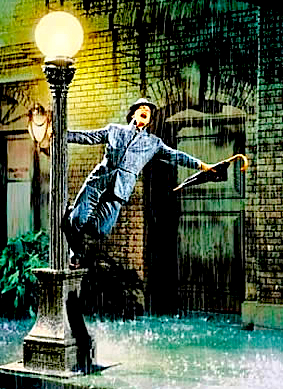

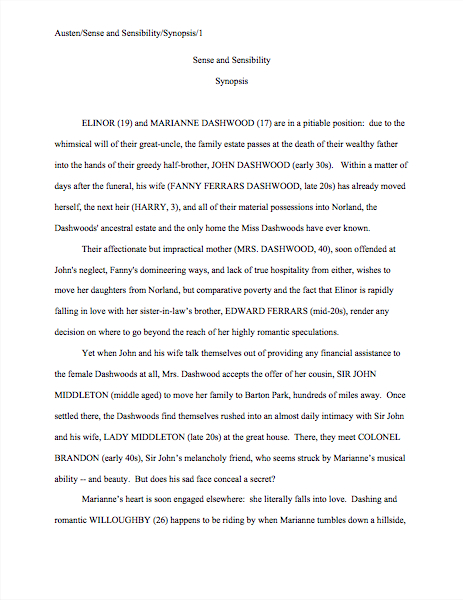
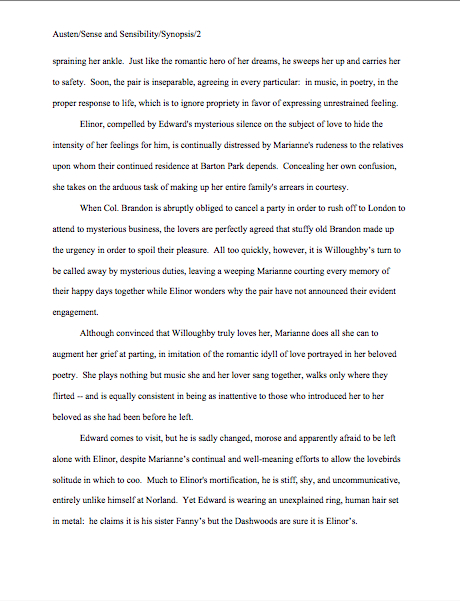
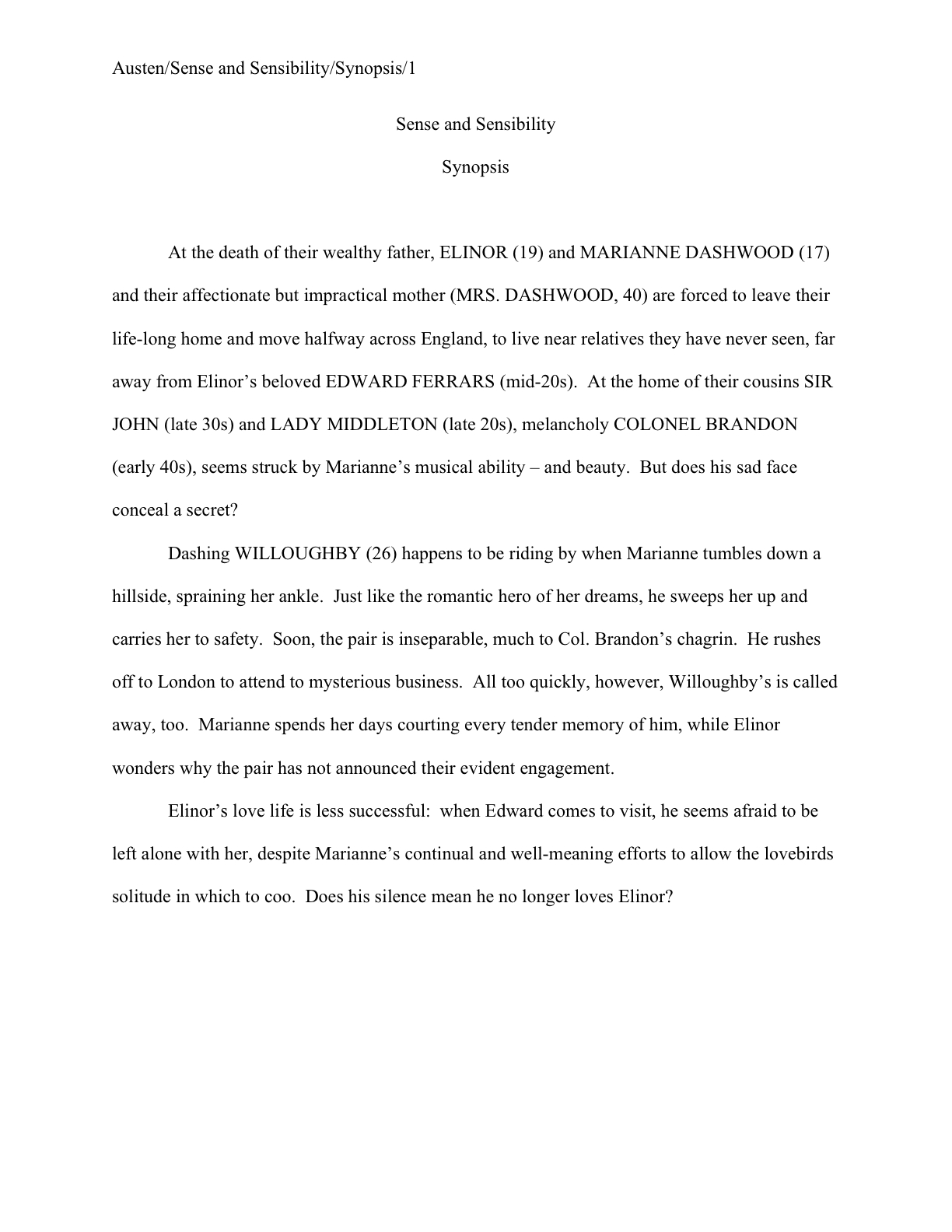


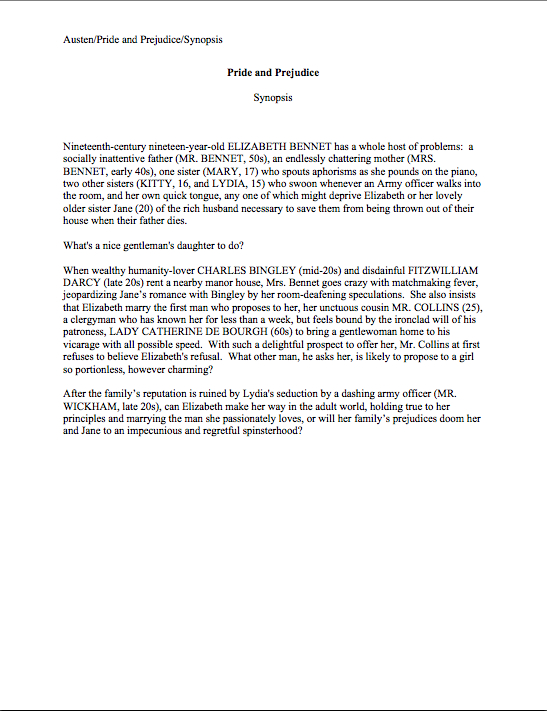
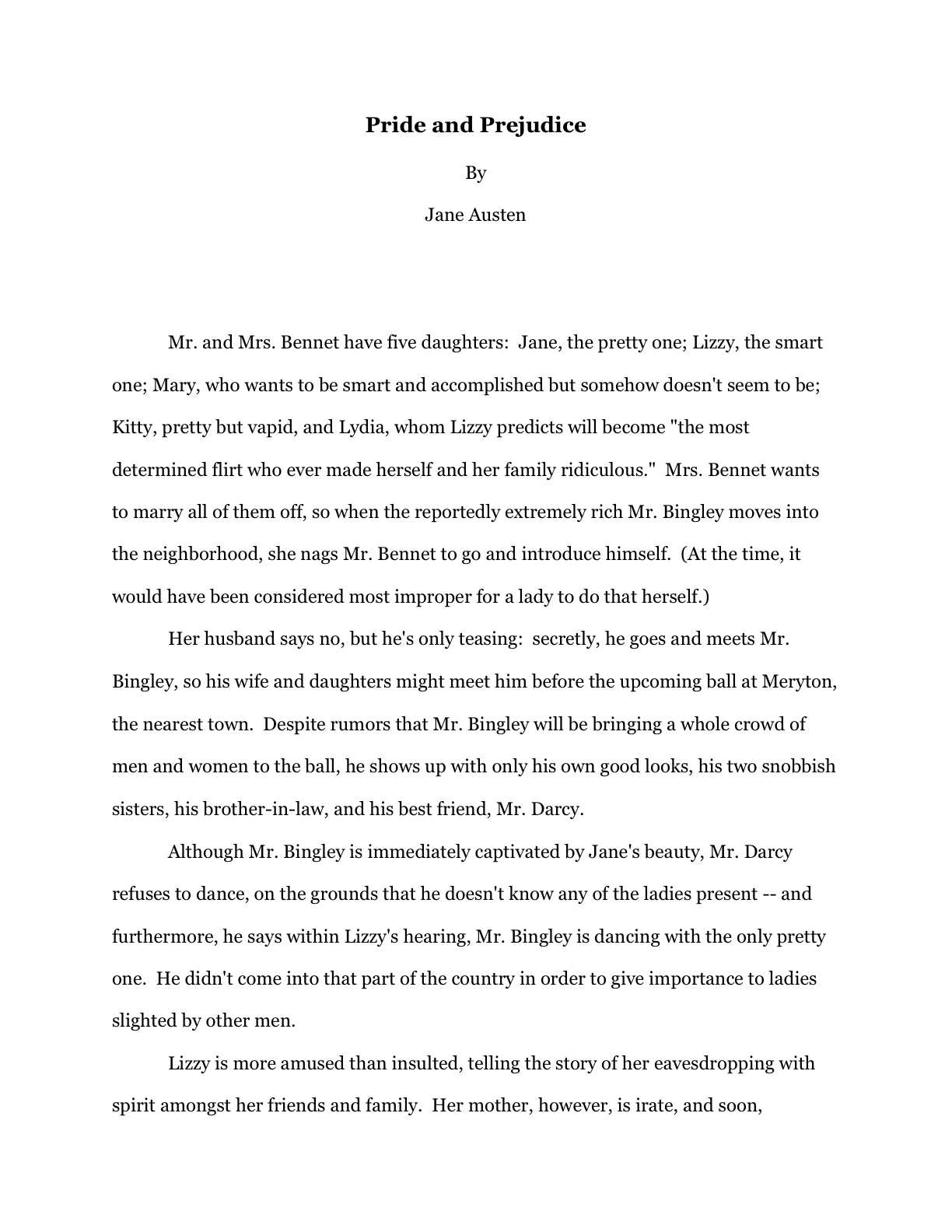





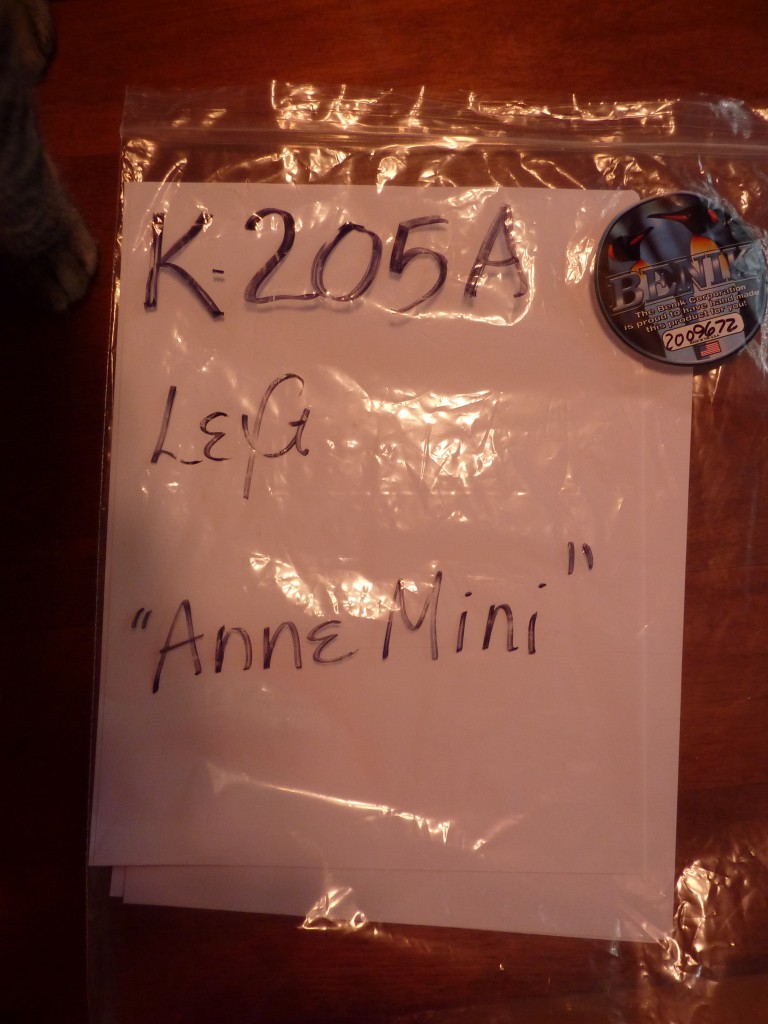
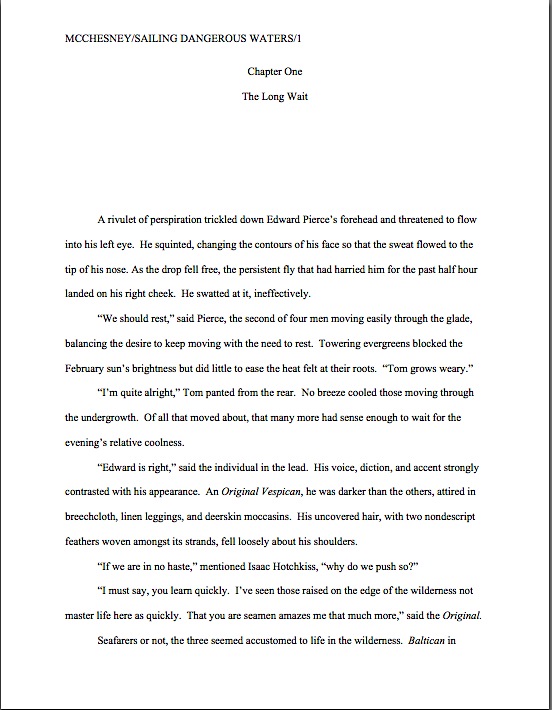
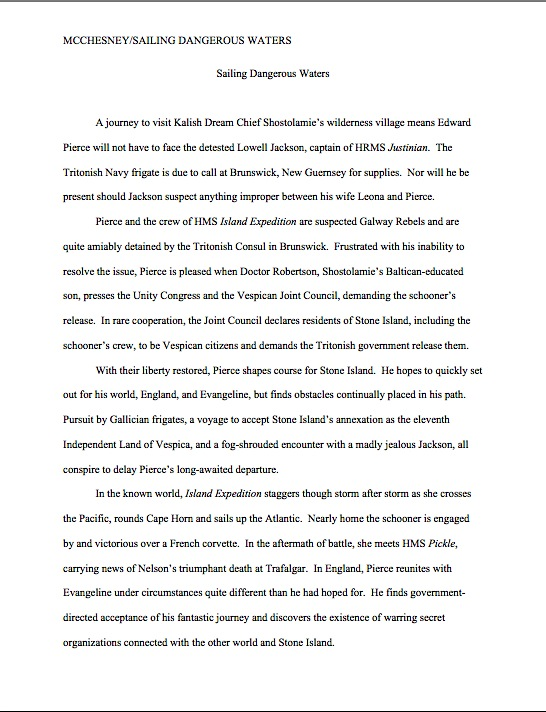
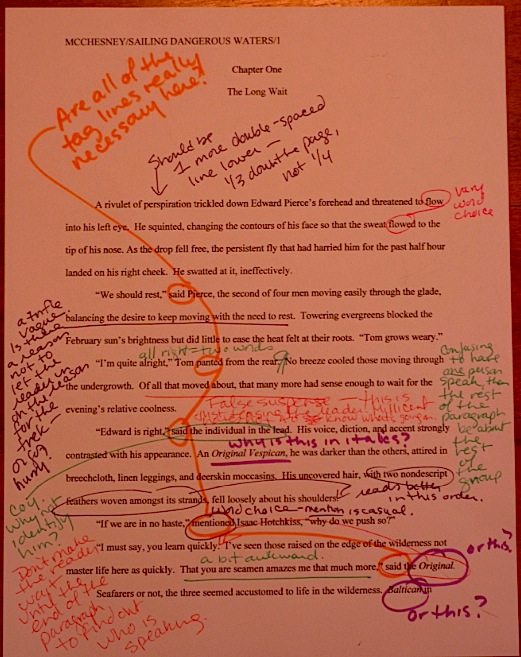
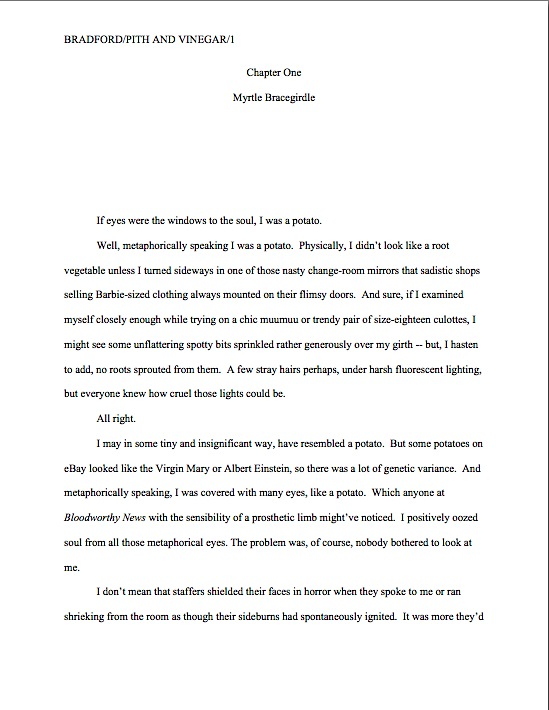
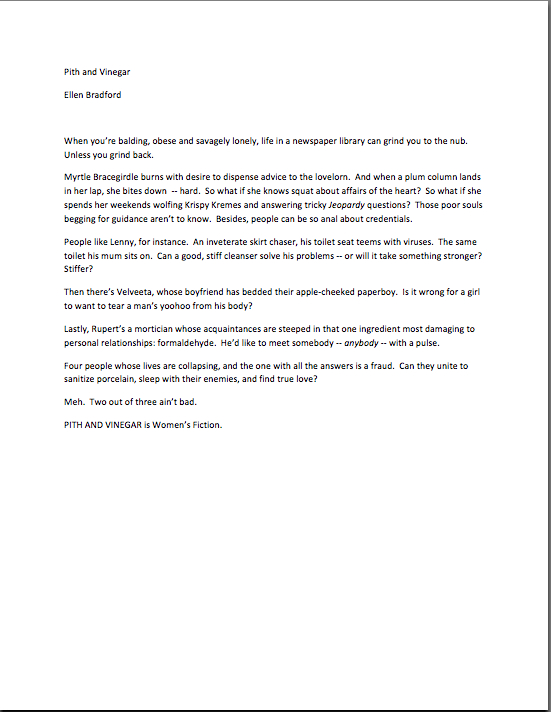
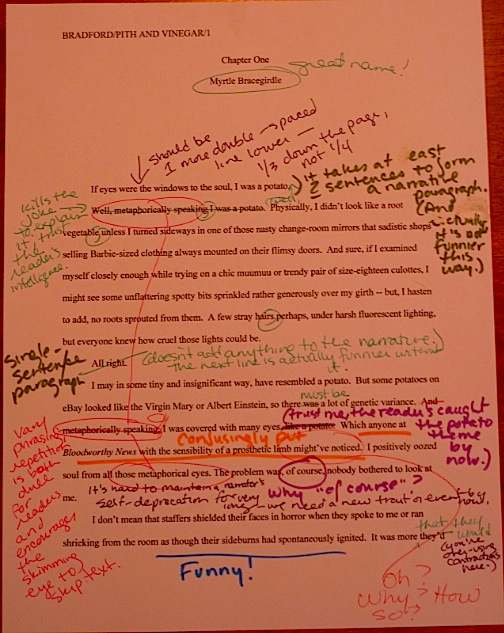



 No matter how many pages or extra materials you were asked to send, do remember to read your submission packet IN ITS ENTIRETY, IN HARD COPY, and OUT LOUD before you seal that envelope. Lest we forget, everything you send to an agency is a writing sample: impeccable grammar, punctuation, and printing, please.
No matter how many pages or extra materials you were asked to send, do remember to read your submission packet IN ITS ENTIRETY, IN HARD COPY, and OUT LOUD before you seal that envelope. Lest we forget, everything you send to an agency is a writing sample: impeccable grammar, punctuation, and printing, please.
 No matter how many pages or extra materials you were asked to send, do remember to read your submission packet IN ITS ENTIRETY, IN HARD COPY, and OUT LOUD before you seal that envelope. Lest we forget, everything you send to an agency is a writing sample: impeccable grammar, punctuation, and printing, please.
No matter how many pages or extra materials you were asked to send, do remember to read your submission packet IN ITS ENTIRETY, IN HARD COPY, and OUT LOUD before you seal that envelope. Lest we forget, everything you send to an agency is a writing sample: impeccable grammar, punctuation, and printing, please.





